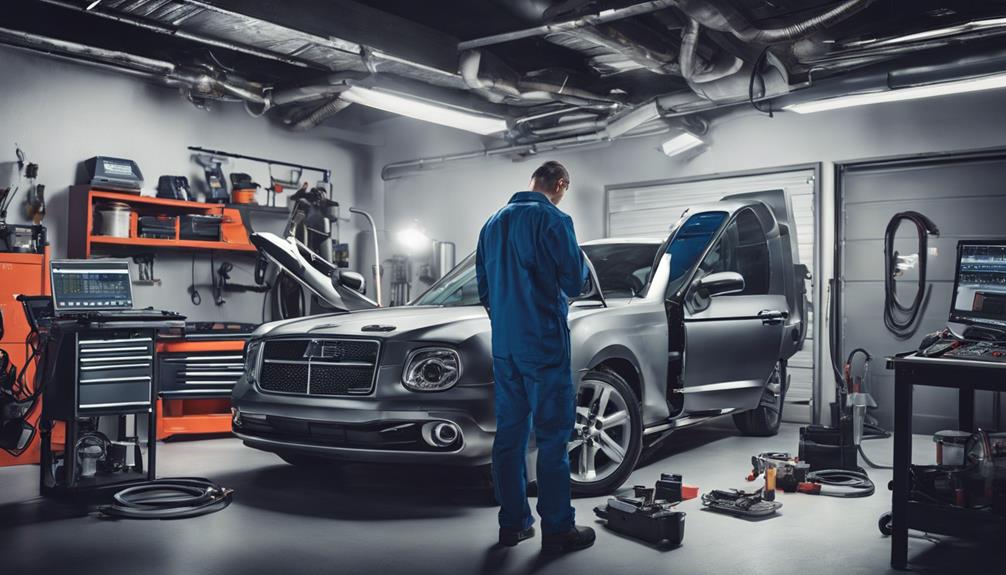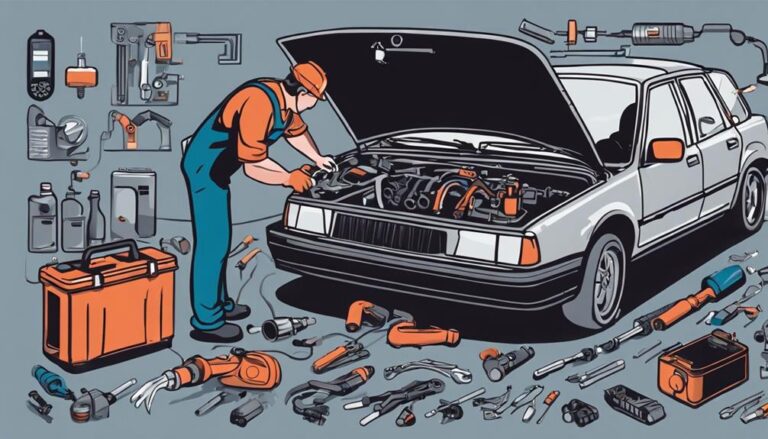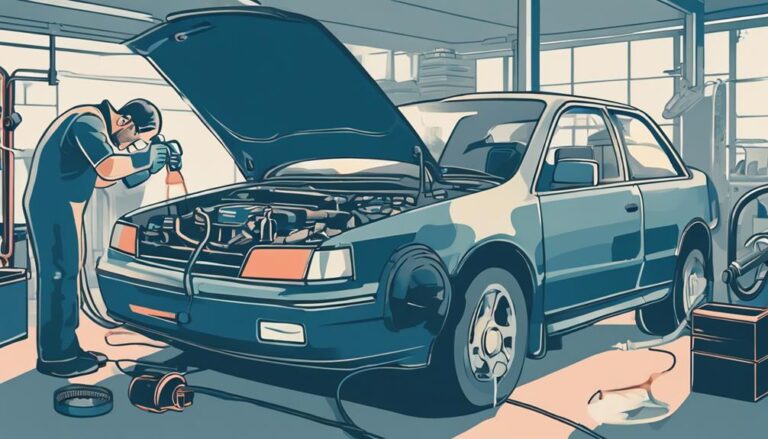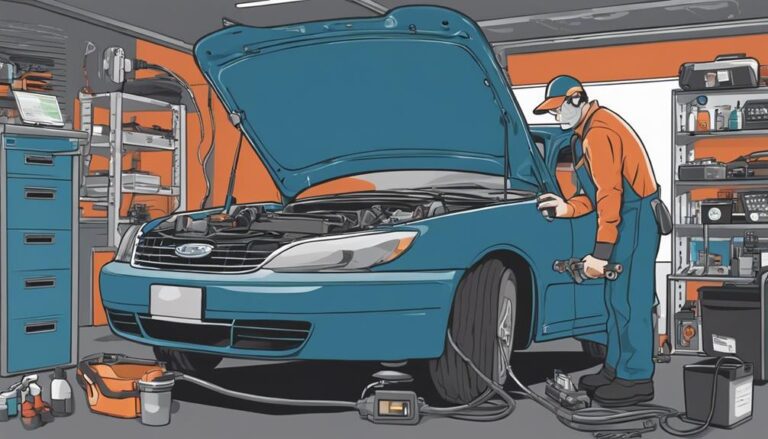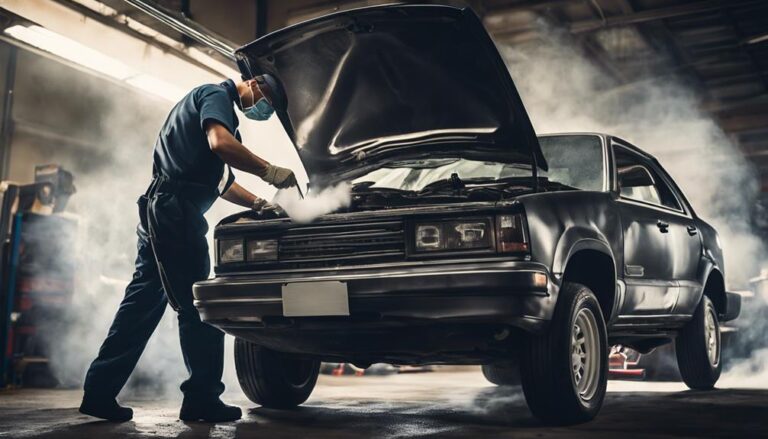Efficient Emission System Repairs: 7 Essential Tips
When it comes to efficient emission system repairs, you may find yourself faced with a choice: proactive maintenance or costly repairs down the line.
With these 7 essential tips, you can navigate the intricacies of emission system care and keep your vehicle running smoothly while minimizing its environmental impact.
From understanding warning signs to identifying key components, this discussion will equip you with valuable insights to make certain your emission system operates at its best.
Key Takeaways
- Timely repairs preserve vehicle performance and environmental well-being.
- Recognize warning signs promptly to prevent severe damage and costly repairs.
- Regular maintenance reduces harmful emissions, improves fuel efficiency, and extends vehicle lifespan.
- Properly maintain key components like catalytic converters and oxygen sensors for efficient emission system operation.
Importance of Timely Emission System Repairs
To understand the significance of timely emission system repairs, consider the critical role they play in preserving both your vehicle's performance and the environment's well-being.
Your vehicle's emission system is crucial in controlling the release of harmful emissions into the atmosphere. By ensuring your vehicle's emission system is functioning at its best, you contribute to reducing emissions that can harm the environment.
Proper maintenance of the vehicle's emission system not only benefits the environment but also enhances your vehicle's overall performance. Timely repairs can prevent further damage to your engine and its components, ensuring that your vehicle runs efficiently and effectively.
Understanding Emission System Warning Signs
When it comes to understanding emission system warning signs, you need to pay close attention to warning lights, analyze common symptoms, and recognize the importance of diagnostic tools in pinpointing issues accurately. Ignoring these indicators can lead to more severe problems down the road, affecting your vehicle's performance and emissions output.
Warning Lights Interpretation
Understanding the warning lights associated with your vehicle's emission system is important for timely maintenance and best performance. When interpreting these lights, pay attention to the following:
- The Check Engine light can indicate issues with the emission system, such as faulty oxygen sensors or a failing catalytic converter.
- Different warning lights signal specific problems within the emission system, requiring prompt attention.
- Ignoring warning lights related to the emission system can lead to more severe damage and costly repairs.
- Understanding the specific warning lights related to emissions helps diagnose and address issues efficiently.
Being aware of these warning signs enables you to take proactive measures to keep your vehicle running smoothly and avoid more significant problems down the road.
Common Symptoms Analysis
Interpreting warning lights related to the emission system is important for identifying potential issues promptly and ensuring peak vehicle performance. Several common symptoms can help you recognize problems in the emission system. Engine sputtering or misfiring, decreased fuel efficiency, unusual odors from the exhaust, and loud noises from the exhaust system are all indicators of possible emission system issues. Here is a breakdown of these symptoms:
| Symptom | Potential Issue |
|---|---|
| Engine sputtering or misfiring | Emission system component malfunction |
| Decreased fuel efficiency | Emission system inefficiency |
| Unusual odors from the exhaust | Emission system leaks or blockages |
| Loud noises from the exhaust system | Faulty emission system components |
Diagnostic Tools Importance
Utilize diagnostic tools such as OBD-II scanners to pinpoint specific emission system issues accurately. When faced with warning signs like the Check Engine light, these tools become essential for troubleshooting. Here's why diagnostic tools are vital for emission system repairs:
- Error Code Reading: OBD-II scanners interpret error codes, indicating problems like faulty oxygen sensors.
- Detailed Problem Identification: These tools provide specific details on issues such as catalytic converter malfunctions.
- Prompt Action: Understanding warning signs prompts the use of diagnostic tools for quick and precise identification.
- Efficient Repairs: By pinpointing the exact source of emission system problems, these tools enable efficient and effective repairs, preventing further damage.
Benefits of Regular Emission System Maintenance
Regular maintenance of your vehicle's emission system offers significant benefits that can prevent costly repairs and improve overall performance. By adhering to a regular maintenance schedule, you can effectively reduce harmful emissions by up to 60%, contributing to a cleaner environment and ensuring compliance with emissions regulations.
Additionally, proper maintenance can enhance fuel efficiency by as much as 40%, ultimately reducing your vehicle's carbon footprint. Well-maintained emission systems have the potential to extend the lifespan of your vehicle by up to 50%, saving you money in the long run by avoiding major issues that could lead to expensive repairs.
Scheduled check-ups every 12,000 miles play an essential role in detecting potential problems early on, saving you both time and money. Embracing regular emission system maintenance not only benefits your vehicle's performance but also positively impacts the environment and your wallet.
Common Emission System Repair Techniques
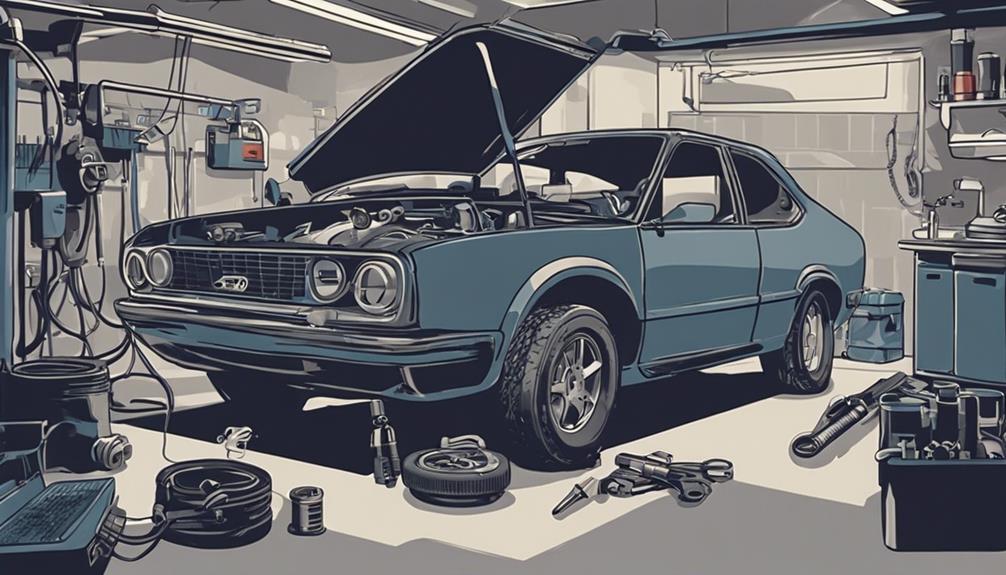
To address common emission system issues effectively, you must first consider the importance of fixing exhaust leaks and resolving electrical problems. Here are some essential techniques for fixing common emission system issues:
- Fix Exhaust Leaks: Follow manufacturers' recommendations to seal any leaks promptly. Leaks can lead to increased emissions and noise problems in the vehicle.
- Resolve Electrical Problems: Check and fix any faulty wiring or sensors to prevent engine misfires and avoid triggering the Check Engine light.
- Deal with Fuel Efficiency Issues: By dealing with issues promptly, you can improve fuel efficiency, leading to savings on frequent refueling and reducing emissions.
- Replace Faulty Catalytic Converters: Make sure to timely replace malfunctioning converters to efficiently convert harmful gases into less harmful emissions, complying with emission standards.
Key Components in Emission System Repairs
An integral aspect of emission system repairs involves understanding the key components, such as the catalytic converter, oxygen sensors, and EGR valve, which play important roles in controlling harmful emissions from vehicles.
The catalytic converter is pivotal as it converts harmful gases into water vapor and carbon dioxide, essential for emission control.
Oxygen sensors are responsible for monitoring the air-fuel mixture to guarantee top performance and fuel efficiency.
On the other hand, the EGR valve plays a significant role by recirculating exhaust gases, reducing harmful emissions, and maintaining engine efficiency.
These components are essential for effective emission system repairs and minimizing environmental impact.
Proper maintenance of the catalytic converter, oxygen sensors, and EGR valve is vital to ensure the emission system operates efficiently.
Factors Influencing Emission System Efficiency
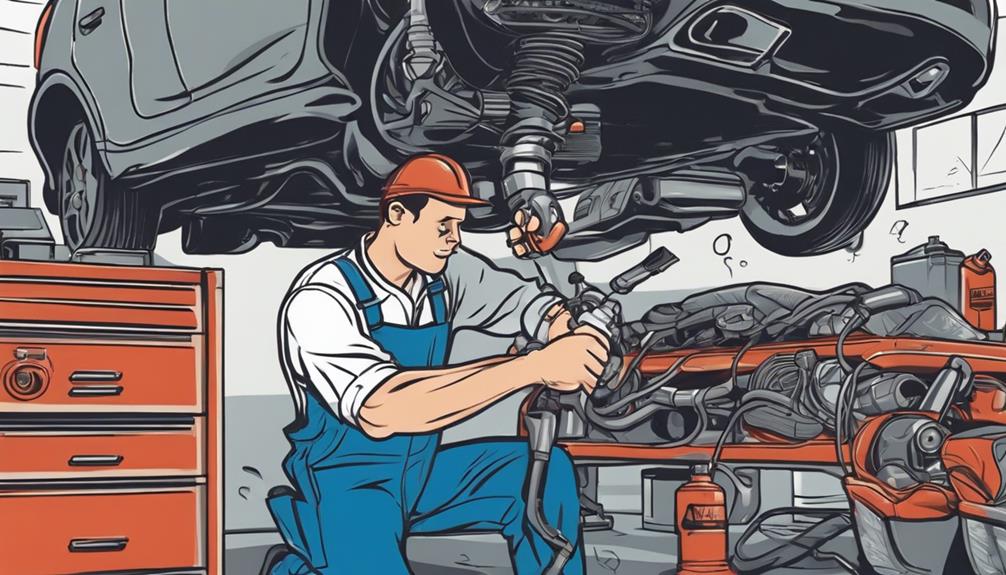
Understanding the interplay between key emission system components like oxygen sensors, catalytic converters, and the EGR valve is essential for optimizing emission system efficiency. To guarantee your emission system is running at its best, consider the following factors:
- Proper Maintenance: Regular upkeep of your emission system components is critical for maintaining efficiency and reducing harmful emissions that contribute to air pollution.
- Timely Repairs: Addressing issues promptly, such as exhaust leaks or faulty sensors, can greatly enhance your emission system's performance and fuel economy.
- Correct Installation: Following manufacturer recommendations for installation procedures is crucial to ensure the proper functioning of emission system components.
- Regular Inspections: Scheduled inspections help in early detection of potential problems, allowing for timely interventions to uphold emission system efficiency and ideal engine performance.
Finding Reliable Emission System Repair Services
For reliable emission system repair services, prioritize seeking out repair shops staffed with ASE-certified technicians specializing in emission system repairs. These technicians have the expertise to accurately diagnose and fix issues related to greenhouse gas emissions in vehicles.
Additionally, consider repair shops equipped with advanced diagnostic tools such as OBD-II scanners. These tools guarantee precise assessments of emission system problems, leading to effective repairs.
When choosing a repair service, look for shops that offer warranties on emission system repairs. This warranty provides added peace of mind and shows the repair shop's confidence in their work. Checking customer reviews and ratings can also help gauge the reliability and quality of the repair services offered.
Opt for repair shops that follow manufacturer guidelines and utilize quality replacement parts, such as air filters, for emission system repairs. By following these tips, you can find a reliable repair service to address any emission system issues your vehicle may be experiencing.
Frequently Asked Questions
How Do I Fix My Emission Control System Warning Light?
To fix your emission control system warning light, start with basic troubleshooting techniques. Check the gas cap, oxygen sensors, and catalytic converter. Use an OBD-II scanner for specific diagnosis. DIY solutions include tightening the gas cap or replacing faulty sensors for efficient repairs.
What Does It Mean When Your Car Says Emission System Problem?
When your car indicates an emission system problem, it signifies issues with important components like the catalytic converter or oxygen sensors. Utilize diagnostic tools to identify common causes promptly. Follow troubleshooting tips for efficient repairs.
What Does It Mean When Acura Says Check Emission System?
When your Acura says 'Check Emission System,' it's flagging potential problems with crucial components like the catalytic converter. Ignoring it can impact fuel efficiency and engine performance. Prompt diagnostics from a professional can pinpoint and fix issues efficiently.
How Much Does It Cost to Fix Check Emission System?
When fixing your emission system, costs vary from $50 for small fixes to over $3,500 for major repairs. Options include diagnostics ($50-$200), sensor replacements ($200-$500), or catalytic converter fixes ($2,000+). DIY solutions might save you money.
Conclusion
To sum up, efficient emission system repairs are essential for maintaining peak vehicle performance and reducing harmful emissions. By staying proactive with regular maintenance and addressing warning signs promptly, you can guarantee a smoother operation on the road and contribute to a cleaner environment.
Remember, neglecting emission system repairs is like playing Russian Roulette with your vehicle's performance and the planet's health. So, take action now to keep your car running smoothly and eco-friendly.

